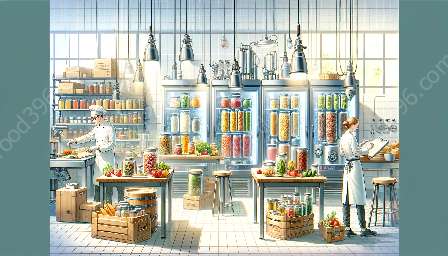Vacuum sealing is a cutting-edge technology that has revolutionized the way we preserve and prepare food. It is a game-changer in both food preservation and the field of culinology, bridging the gap between science and art in the culinary world.
The Science of Vacuum Sealing
Vacuum sealing, also known as sous vide (French for under vacuum), involves removing air from a plastic pouch or container and sealing it tightly. This process creates a vacuum environment, effectively eliminating oxygen, which is known to be the primary cause of food spoilage.
The absence of oxygen prevents the growth of aerobic bacteria, molds, and yeasts, thereby extending the shelf life of food products. Without oxygen, enzymatic reactions that lead to food degradation are also inhibited, preserving the color, texture, flavor, and nutrients of the food.
Techniques and Benefits of Vacuum Sealing
Vacuum sealing not only preserves food but also enhances its quality and convenience. The technique can be used for a wide range of foods, including meats, poultry, seafood, fruits, vegetables, and even liquids. By vacuum sealing food, the flavors are intensified, and the marinating process is accelerated, resulting in tender and flavorful dishes.
Additionally, vacuum sealing prevents freezer burn, as the absence of air prevents moisture loss and crystallization, maintaining the original quality of the food when frozen. This extends the freezer storage life of food, offering long-term preservation solutions.
In the context of culinology, vacuum sealing contributes to the innovation and experimentation in the culinary arts. It empowers chefs and food scientists to explore new techniques for flavor infusion, precision cooking, and optimizing texture, setting the stage for creative and boundary-pushing culinary experiences.
Impact on Food Preservation
With growing concerns about food waste and sustainable practices, vacuum sealing presents a sustainable solution for extending the shelf life of perishable foods. By reducing spoilage and maintaining freshness, this technology aligns with the larger vision of promoting food conservation and minimizing environmental impact.
Crossroads of Vacuum Sealing and Culinology
The intersection of vacuum sealing with culinology creates a fertile ground for culinary innovation. By leveraging the precise control over the cooking environment that vacuum sealing provides, culinologists can achieve consistent and predictable results, leading to new gastronomic experiences and culinary expressions.
Through the fusion of science and art, vacuum sealing has transformed the culinary landscape, revolutionizing the way food is not only preserved but also prepared and presented. It has opened new avenues for creativity, sustainability, and quality in the culinary world, making it an indispensable tool for both food preservation and culinology.


